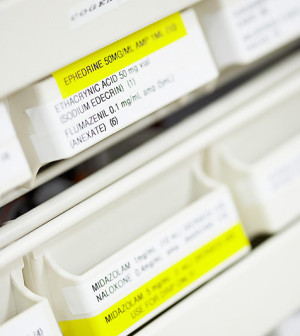- Skip Storing This Everyday Product in the Fridge Door
- Green Tea + B3 Pairing May Boost Brain Health
- Navigating Your Midlife Crisis: Embracing New Possibilities
- City Raccoons Showing Signs of Domestication
- Mapping the Exposome: Science Broadens Focus to Environmental Disease Triggers
- One Week Less on Social Media Linked to Better Mental Health
- Your Brain Changes in Stages as You Age, Study Finds
- Some Suicide Victims Show No Typical Warning Signs, Study Finds
- ByHeart Formula Faces Lawsuits After Babies Sickened With Botulism
- Switch to Vegan Diet Could Cut Your Greenhouse Gas Emissions in Half
LifeVest Wearable Defibrillator Approved for Children

The LifeVest wearable defibrillator has been approved by the U.S. Food and Drug Administration for children at risk for cardiac arrest who can’t have a defibrillator implanted.
A defibrillator shocks an abnormally beating heart back into its normal rhythm. While there are a number of implanted defibrillators approved for children, some patients can’t have the devices implanted for medical reasons or because parents won’t consent to them, the FDA said Thursday in a news release. The device is already approved for adults.
“The pediatric medical community is often forced to use adult devices off-label without appropriate labeling or instructions for use in pediatric patients,” said Dr. Vasum Peiris, chief medical officer of pediatrics and special populations in the FDA’s Center for Devices and Radiological Health.
“Doctors now have important information that may help them safely prescribe this life-saving device to young patients who may benefit from the device,” Peiris added.
People who require defibrillators include those with certain diseases that lead to an abnormal heartbeat and people born with heart defects, the agency said.
An abnormal heartbeat raises a person’s risk of going into cardiac arrest, which greatly increases the risk of death, the FDA said. Fast treatment with a defibrillator can save the person’s life.
The wearable model weighs less than 2 pounds. It consists of an electrode belt and garment that surround the person’s chest, and a monitor that’s worn around the waist. Users must weigh at least 41 pounds and have a chest size of 26 inches or greater, the size of an average 8-year-old, the FDA said.
The wearable device was first approved for adults in 2001, and later models were approved thereafter. The approval for children followed clinical studies of 248 people aged 3 to 17.
The device is produced by Pittsburgh-based ZOLL Manufacturing.
More information
Visit the FDA to learn more.
Source: HealthDay
Copyright © 2025 HealthDay. All rights reserved.










